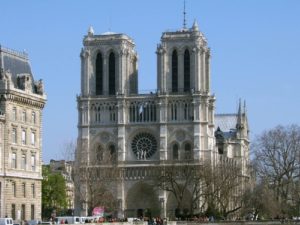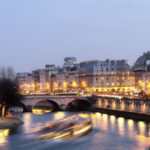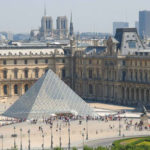Notre Dame de Paris
 The world-famous Notre-Dame de Paris is one of the main and most important symbols of not only Paris, but the whole of France. Few people know that, at present, Notre Dame performs the function of the largest religious center in operation. Translated from French, Notre Dame means the phrase Our Lady. Of course, it means the Virgin Mary. In this case, it is impossible not to emphasize the true desire of the French to short and easily memorable phrases.
The world-famous Notre-Dame de Paris is one of the main and most important symbols of not only Paris, but the whole of France. Few people know that, at present, Notre Dame performs the function of the largest religious center in operation. Translated from French, Notre Dame means the phrase Our Lady. Of course, it means the Virgin Mary. In this case, it is impossible not to emphasize the true desire of the French to short and easily memorable phrases.
The cathedral is located in the heart of Paris – in the middle of the Seine on the small island of the Cite. It was here that Paris was founded almost two and a half millennia ago.
The construction of the cathedral was begun in 1163 by Emperor Alexander III. There is an assumption that the most famous bishop, Guillaume, specially ordered the bas-reliefs for architects according to very unusual mystical sketches. In them, he wished to encrypt for future generations a code containing a certain secret of the philosopher’s stone. The bishop said that the one who manages to unravel this mysterious code will be able to rule the world, heal from all sorts of diseases and ailments.
One way or another, but Notre Dame during its existence has become a true masterpiece of the French Gothic. It is a noble majestic building, with some destruction from significant decay. Even under Louis XIV, the building of Notre Dame suffered a significant decline and damage.
The appearance of the building was slightly modified due to the need to replace elegant stained glass windows with ordinary glass painted with gold. Later, the cathedral was savagely plundered. As a result, the altar was burned, more than thirty statues of Jewish kings out of incomprehensible ignorance were mistaken for French kings and broken.
By 1804, Notre-Dame de Paris was dilapidated and the government decided to demolish it. But the sudden popularity of the novel by the famous V. Hugo turned out to be a significant impetus for raising funds for his restoration.
Inside the cathedral you can see wooden confessional. Today, in these secret booths are ready to accept a person absolutely any denomination. It is believed that anyone who has sinned has the right to confess, regardless of national or religious affiliation. Some people think that a conversation with a priest is more like a visit to a psychoanalyst. Interestingly, the custom of covering the head for women is completely unnecessary here and is provided at their discretion.
An unusual old organ from the beginning of the 18th century is installed near the western wall of the cathedral. Its unusualness lies in the fact that it consists of more than 6000 pipes, 100 pedals and 5 keyboards. There is also a treasury here, where once a year, on Good Friday, it is allowed to inspect the crown of thorns, slivers from the cross on which Jesus Christ was crucified, the clothes of St. Louis and part of his relics.
During the French Revolution, the bells of Notre Dame were melted down. Yet one of the largest bells has been preserved. It can be seen on the south tower of the cathedral building. The big bell is the largest in France and rings solely on solemn occasions. Unusual frequency sounds admire the purity of tone in F-sharp.
Climbing up the spiral staircase to the observation deck of the south tower, we have an amazing view of Paris. Then you can make an interesting excursion to the ancient dungeon and explore the famous Gallorim fortifications, as well as an unusual heating system.



























